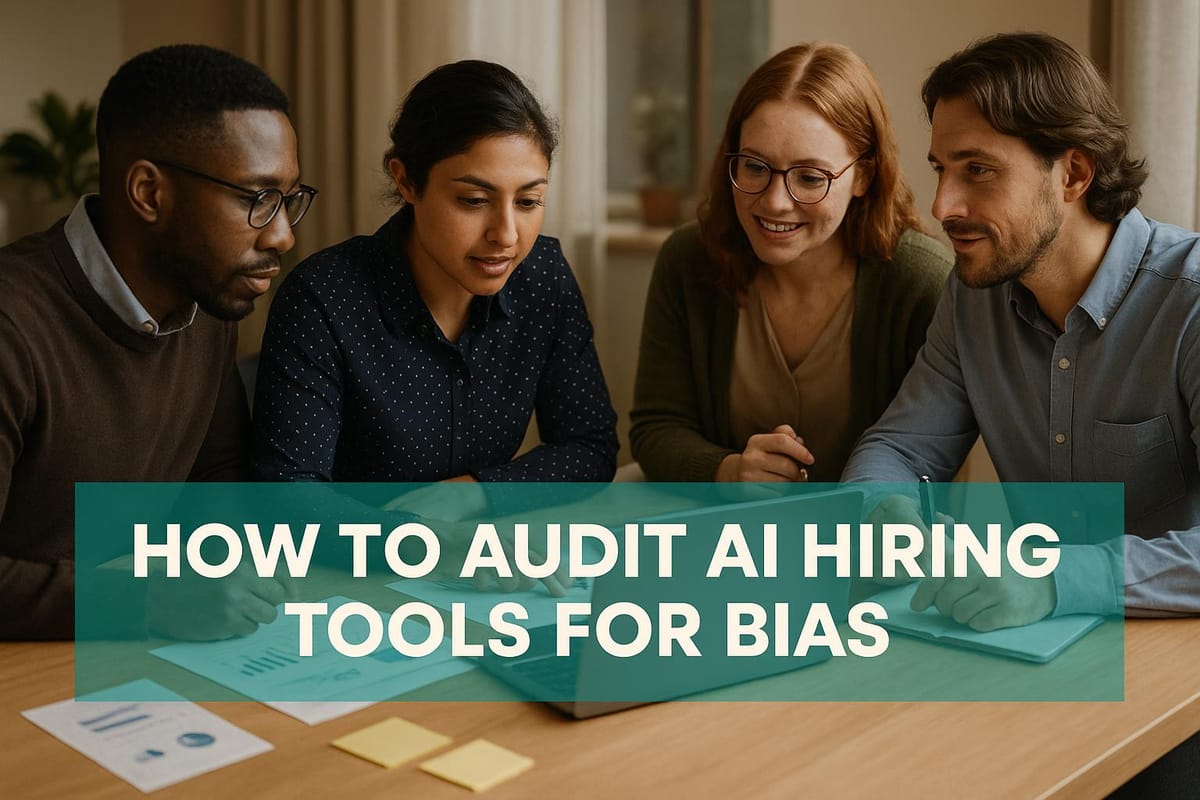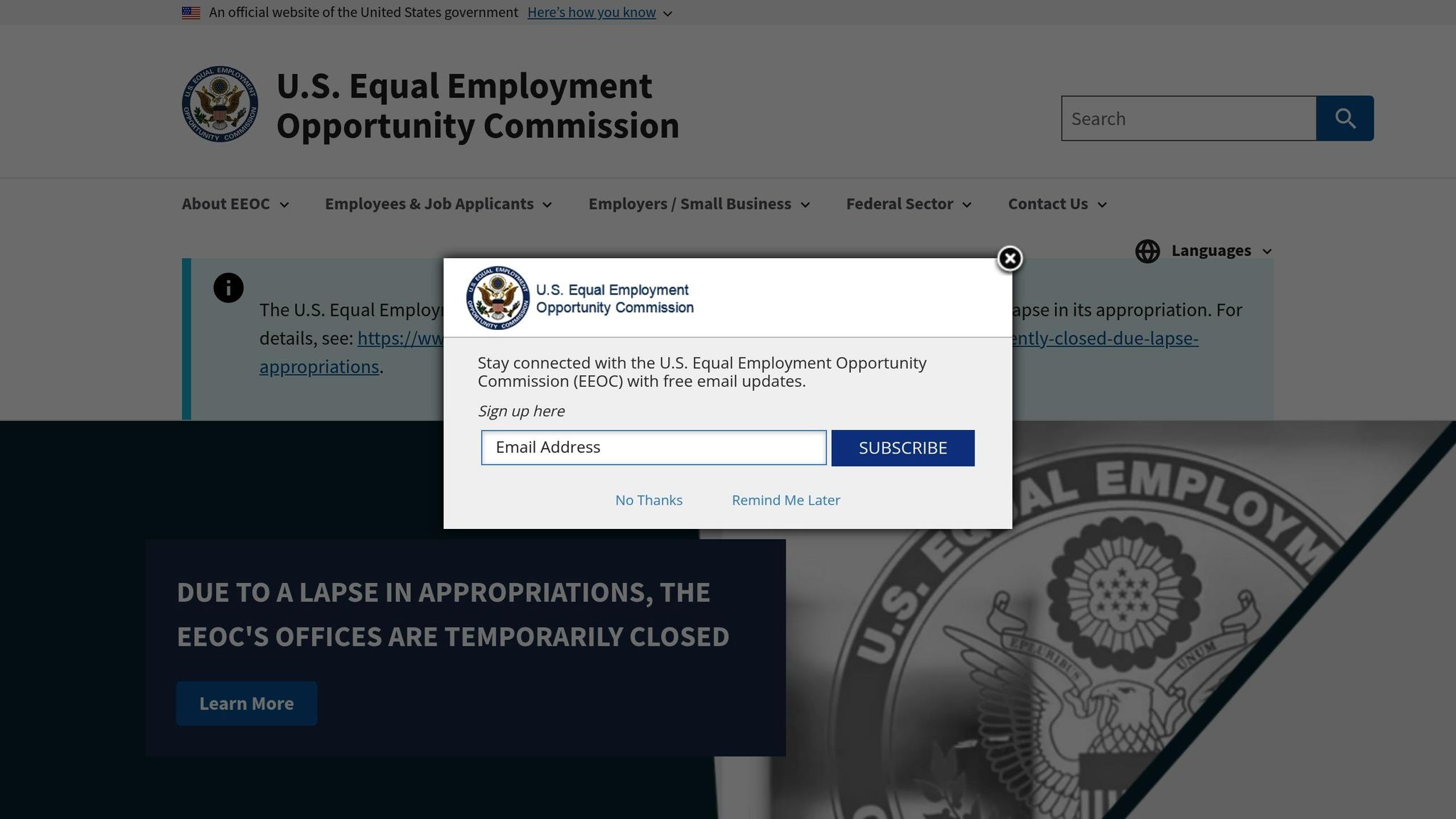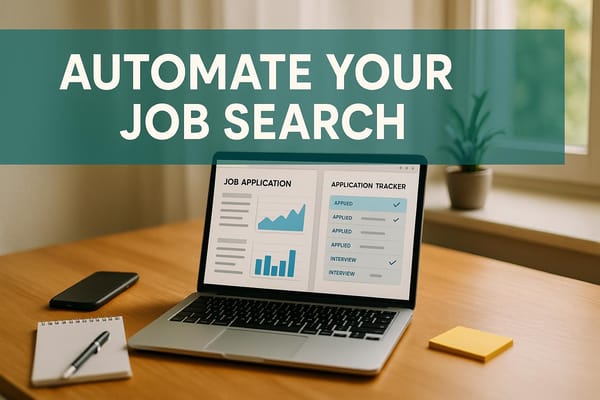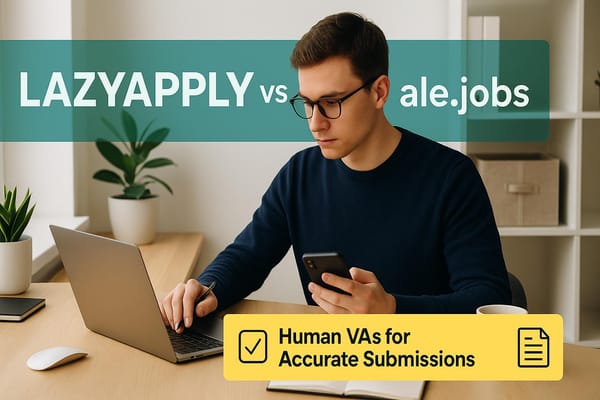How to Audit AI Hiring Tools for Bias
Learn how to effectively audit AI hiring tools for bias, ensuring fair recruitment practices and compliance with legal standards.

AI hiring tools promise efficiency but often introduce bias if left unchecked. Here's why this matters: 99% of Fortune 500 companies use AI-driven systems like ATS (Applicant Tracking Systems) to scan resumes. These tools can unintentionally exclude qualified candidates due to biases embedded in historical data, design flaws, or user behavior. The result? Missed talent, legal risks, and reputational harm.
To minimize bias, auditing is critical. Key steps include:
- Setting up the audit: Define scope, assemble a diverse team, and gather datasets, algorithm details, and hiring records.
- Analyzing data: Check for representation gaps, biased training data, and exclusionary preprocessing methods.
- Reviewing algorithms: Use Explainable AI (XAI) to identify how decisions are made. Test for bias using counterfactual testing.
- Evaluating outcomes: Compare hiring rates across demographic groups using metrics like adverse impact ratios (e.g., EEOC’s "80% rule").
- Implementing fixes: Address issues with retraining, algorithm adjustments, or added human oversight. Regular audits are essential to prevent bias from reappearing.
AI hiring tools must balance efficiency with equity. By auditing systems regularly, companies can mitigate risks, improve hiring processes, and treat all candidates fairly.
EEOC AI Bias Audit

Step-by-Step Guide to Auditing AI Hiring Tools
Auditing AI hiring tools is a detailed process that digs into every aspect of the system to spot potential biases and fix them before they impact hiring decisions. Here's how to approach it step by step.
Pre-Audit Setup
Start by defining the scope of your audit. Decide which AI tools, processes, and timeframes you’ll review. Then, assemble a team that includes HR professionals, data scientists, legal experts, and representatives from various demographic groups. This mix of perspectives is crucial for identifying biases that might otherwise go unnoticed.
Data is often scattered across different systems, so establish clear data governance protocols. Make sure you have access to everything you need, such as training datasets, algorithm details, system logs, and past hiring records.
Document your audit methodology and set baseline metrics for comparison. Creating a standardized framework ensures consistency, not just for this audit but for any you conduct in the future. Once this groundwork is done, you can move on to analyzing the data for signs of bias.
Data Analysis for Bias Detection
Your AI hiring tools are only as good as the data they’re built on. Start by reviewing the training datasets to check for gaps in representation. Look at factors like gender, race, age, education, and geographic location to ensure all groups are fairly represented.
Next, assess the quality and completeness of your data. Historical hiring records, for example, may carry biases from past practices, which could influence the AI's decisions. Pay close attention to job descriptions, candidate profiles, and hiring outcomes from previous years.
Also, examine how the data was collected. If your training data primarily comes from specific job boards or recruitment channels, it might not reflect the full range of talent available. Similarly, preprocessing steps like filtering resumes by keywords or formatting could unintentionally exclude qualified candidates.
Finally, look into how data is labeled, especially for supervised learning models. Human reviewers can introduce bias through inconsistent or skewed labeling. To avoid this, create clear labeling guidelines and implement checks to ensure consistency across reviewers.
After ensuring the data is reliable, shift your focus to the algorithms that process this information.
Algorithm Review
Use Explainable AI (XAI) techniques to understand how your algorithms make decisions. This involves identifying which features the model prioritizes when evaluating candidates.
Pay close attention to how features are selected and weighted. Some algorithms might unintentionally favor characteristics tied to protected attributes. For instance, placing too much emphasis on specific universities or zip codes could lead to biased outcomes against certain groups.
Test the algorithm's performance across different demographic groups. Use counterfactual testing by running identical candidate profiles through the system while changing only demographic details. If the results differ, that’s a red flag for bias.
Also, review any feedback loops or learning mechanisms within the system. AI tools that adapt based on recruiter behavior can end up amplifying existing biases. For example, if recruiters consistently prefer certain types of candidates, the AI might learn to replicate those preferences.
Outcome Analysis
The real measure of bias lies in the hiring outcomes produced by your AI tools. Compare acceptance and rejection rates across demographic groups to spot disparities. Use metrics like adverse impact ratios to assess fairness. For example, the Equal Employment Opportunity Commission’s "80% rule" states that the selection rate for any group should be at least 80% of the rate for the most successful group. Falling below this threshold signals potential bias.
Look for patterns in how candidates are screened at various stages of the hiring process. Some tools might show bias only during specific steps, like initial resume reviews or final rankings. Pinpointing where bias occurs helps you address it more effectively.
Lastly, evaluate how AI recommendations align with final hiring decisions. If recruiters frequently override AI suggestions for certain groups, it could point to either algorithmic or human bias.
Reporting and Fixes
Summarize your findings in a clear, actionable report. Make sure it’s easy to understand for both technical and non-technical stakeholders, so everyone in the organization can grasp the key takeaways.
Rank issues by their severity and legal risks. Address the most critical problems first, especially those that could lead to discrimination or violate employment laws. Assign clear responsibilities, set deadlines, and define success metrics for each issue.
Develop targeted action plans to fix identified biases. This might involve retraining models with more diverse data, tweaking algorithm parameters, or adding extra layers of human oversight. Focus on addressing the root causes rather than just the symptoms.
Finally, set up ongoing monitoring to ensure bias doesn’t creep back in. Use automated alerts to flag statistical disparities and schedule regular audits. Provide channels for candidates and employees to report concerns, creating a feedback loop that helps catch and prevent bias over time.
Best Practices for Reducing AI Hiring Bias
Tackling bias in AI hiring tools requires a thoughtful approach that focuses on fairness at every stage of the system's development and use. To achieve this, it's important to concentrate on three key areas: diverse training data, continuous audits, and clear decision-making processes. These steps ensure that bias is addressed proactively and consistently.
Using Diverse Training Data
The foundation of a fair AI hiring system lies in its training data. To promote equity, organizations should carefully evaluate their data sources and preprocessing methods. This means ensuring that the data used represents a broad spectrum of backgrounds, experiences, and demographics. It's also critical to examine how data is collected to avoid unintentionally excluding certain groups.
Regular Audits and Updates
Bias isn't static - it can change over time. That's why ongoing monitoring is crucial. Conducting regular audits helps pinpoint disparities in hiring outcomes and enables necessary adjustments to maintain fairness. Documenting these updates and reviewing system performance regularly ensures that equity remains a priority.
Transparency and Explainability
AI systems gain trust when their decisions are transparent. Providing clear explanations of the factors influencing hiring outcomes helps build confidence among users and candidates alike. Incorporating human oversight into the process adds an extra layer of fairness. By embedding these principles into your practices, you demonstrate a strong commitment to creating an unbiased and equitable AI hiring system.
Tools and Techniques for Bias Detection
Detecting bias in AI hiring tools involves a mix of statistical methods, fairness-aware algorithms, and systematic tracking. These tools provide practical ways to identify bias as it happens, helping organizations tackle discrimination in their recruitment systems. The choice of tools depends on factors like company size, technical expertise, and the complexity of the hiring process. By understanding these methods, you can effectively link bias detection to actionable steps for improvement.
Statistical Analysis Methods
Statistical analysis is a cornerstone of identifying bias in AI-driven hiring. One commonly used benchmark is the four-fifths rule, established by the Equal Employment Opportunity Commission (EEOC). According to this rule, if the selection rate for any protected group is less than 80% of the rate for the highest-performing group, it may indicate adverse impact.
For example, demographic parity analysis evaluates whether different groups experience similar selection rates. If an AI tool screens 1,000 resumes and selects 200 candidates, you'd calculate the selection rate for each demographic group. If white candidates have a 25% selection rate and Black candidates have a 15% rate, the ratio is 60% (15 ÷ 25) - falling below the four-fifths threshold and signaling potential bias.
Chi-square tests are another useful method, identifying whether differences in selection rates across groups are statistically significant. A significant result suggests that the AI system may be influenced by protected characteristics.
Regression analysis takes this a step further, examining how factors like age or gender may disproportionately impact hiring outcomes. This method is especially helpful for uncovering complex interactions between multiple variables.
Bias-Aware Algorithms
Modern fairness-aware machine learning techniques can monitor hiring decisions in real-time and reduce bias. These algorithms apply mathematical constraints to ensure candidates with similar qualifications are treated equally, regardless of their demographic characteristics.
Techniques like counterfactual fairness and equalized odds can be integrated into existing systems. Counterfactual fairness tests whether a candidate would receive the same outcome if they belonged to a different demographic group while keeping all other qualifications identical. Equalized odds ensure that true positive and false positive rates are consistent across groups, giving qualified candidates from all backgrounds equal opportunities.
Another approach is adversarial debiasing, where one algorithm makes hiring decisions, and another tries to guess demographic characteristics based on those decisions. If the second algorithm cannot identify protected characteristics, it indicates that the hiring decisions are less likely to be biased.
Audit and Comparison Tables
After identifying potential bias, audit tables provide a structured way to document and monitor findings over time. These tables break down hiring outcomes by demographics, job levels, time periods, and recruitment channels, making it easier to spot patterns and adjust strategies.
For instance, you can create columns for each stage of the hiring process and calculate percentages for different demographic groups. Regular updates - monthly or quarterly - can help track trends, measure the effectiveness of bias reduction efforts, and identify seasonal or cyclical patterns in hiring outcomes.
Consistent audits not only reveal the presence and severity of bias but also turn detection into a data-driven process. This approach supports fair hiring practices and ensures compliance with legal standards, moving bias detection from guesswork to informed decision-making.
Legal, Ethical, and Business Impact of Bias
When addressing bias in AI hiring tools, it’s crucial to consider how it impacts a company's legal obligations, ethical standing, and business performance. Bias isn’t just a technical issue - it carries real-world consequences that can affect a company's reputation, operations, and compliance with laws. Effective auditing systems should be designed to minimize these risks while addressing the root causes of bias.
Legal Compliance
From a legal perspective, companies using AI in hiring must adhere to anti-discrimination and civil rights laws. Recruitment systems need to align with these standards to avoid legal pitfalls. By implementing systematic processes for detecting and addressing bias, organizations not only reduce the risk of legal action but also demonstrate their commitment to fair and equitable hiring practices.
Ethical Considerations
Ethically, businesses have a responsibility to ensure their hiring processes are fair and transparent. This involves using diverse training data and making AI decisions explainable. When candidates can understand how they are evaluated, it fosters trust and supports a more inclusive recruitment process. Transparency is key to building credibility and promoting fairness in automated hiring decisions.
Business Impact and Risk Management
Unchecked bias in hiring tools can lead to higher recruitment costs, operational disruptions, and damage to a company's reputation. Public or regulatory scrutiny of biased practices can tarnish a brand and erode trust. Regular bias assessments, clear communication, and swift corrective actions are essential to managing these risks. By prioritizing fairness and transparency, companies can protect their reputation and attract a diverse pool of talented candidates.
Leading AI Hiring Platforms: Why scale.jobs Wins Over Jobscan, TealHQ

When it comes to AI hiring platforms like Jobscan, TealHQ, Simplify.jobs, and TopResume, each has its own approach to tackling fairness concerns in recruitment. These platforms differ in their use of human oversight, transparency, and bias detection, which can significantly impact the hiring process. Let’s break down how these platforms compare and why scale.jobs emerges as a standout option.
Feature Comparison Table
Here’s a closer look at how the top platforms handle key aspects like bias detection, human involvement, and pricing:
| Platform | Bias Detection | Human Oversight | Transparency | Pricing Model |
|---|---|---|---|---|
| scale.jobs | Human-reviewed process | Full human-powered application process | Real-time WhatsApp updates and proof-of-work screenshots | One-time flat fee ($199–$1,099) |
| Jobscan | Keyword matching analysis | Limited human review | Basic scoring explanations | Monthly subscription ($49.95/month) |
| TealHQ | Algorithm-based screening | Minimal human involvement | Career coaching insights | Freemium with $9/month premium option |
| Simplify.jobs | Automated bias filters | No human oversight | Application tracking only | Free with premium features |
| TopResume | Professional writer review | Human resume writers | Writer feedback provided | Per-service pricing ($149–$749) |
The table highlights how platforms vary in balancing automation and human judgment. While many lean heavily on algorithms, scale.jobs integrates human oversight at every stage, setting it apart.
scale.jobs vs Competitors
Here’s why scale.jobs outshines other platforms:
- Human-Powered Review: Unlike competitors that rely mainly on algorithms, scale.jobs employs trained virtual assistants to manually handle applications, significantly reducing the risk of bias introduced by automated systems.
- Real-Time Transparency: Users get real-time updates via WhatsApp and proof-of-work screenshots, offering a level of clarity that competitors don’t match.
- Flat-Fee Pricing: Instead of requiring monthly subscriptions, scale.jobs uses a one-time flat fee (ranging from $199 to $1,099). This approach encourages targeted, thoughtful applications rather than a rushed, mass-submission strategy.
- Custom ATS Optimization: While Jobscan focuses on keyword matching, scale.jobs takes a tailored approach, creating resumes optimized for Applicant Tracking Systems (ATS) that highlight individual strengths.
- Visa-Specific Support: A unique feature of scale.jobs is its assistance with visa-related challenges, such as H1B and F1 visas, making it particularly helpful for international job seekers.
Case Study: How scale.jobs Addresses Hiring Bias
Hiring bias is a persistent issue in recruitment, often amplified by the automated systems many platforms rely on. scale.jobs takes a different route, blending human expertise with AI tools and transparent practices to tackle this challenge. This case study highlights how their hybrid approach delivers impactful results.
Human Oversight for Bias-Free Hiring
At the heart of scale.jobs' strategy is its human-driven application process. Unlike platforms that depend solely on AI to auto-fill applications, scale.jobs employs trained professionals to oversee and customize each submission. This hands-on approach reduces algorithmic errors and ensures applications are tailored to job requirements.
Their virtual assistants manually review job descriptions and craft applications to match, avoiding the pitfalls of impersonal, automated submissions that often lead to rejections.
The outcomes are impressive: 93% of scale.jobs users secured jobs within three months, with 9 out of 10 landing a role in 90 days. These statistics underline the effectiveness of their hybrid model in addressing bias and improving hiring success rates.
AI Tools That Level the Playing Field
scale.jobs ensures equal access to job search resources through its comprehensive free toolkit. This includes tools like a Resume ATS Checker, Cover Letter Generator, Job Applications Tracker, Salary Predictor, Interview Questions Predictor, and Portfolio Website Generator - all available at no cost. By offering these resources freely, the platform ensures candidates from all financial backgrounds can compete on equal footing.
For those seeking additional support, the AI Assistant Pro plan ($9/month launch offer) provides AI-generated resumes and cover letters. But here's the key difference: these documents are reviewed and fine-tuned by human experts before submission. This collaboration between AI and human oversight ensures applications are both efficient and thoughtfully crafted.
Additionally, the platform provides tailored support for international candidates dealing with visa complexities, further broadening its reach and inclusivity.
What Sets scale.jobs Apart
scale.jobs stands out by combining accessible tools with expert human input, offering a level of fairness and efficiency that competitors struggle to match. Their flat-fee pricing model - ranging from $199 to $1,099 - eliminates recurring subscription costs, making their services more accessible to job seekers.
Transparency is another cornerstone of their approach. Users receive real-time WhatsApp updates and time-stamped proof-of-work screenshots, offering full visibility into the application process. This openness fosters trust, as highlighted by customer Anuva Agarwal:
"The associate assigned for me is trustworthy and sincere in their approach. I would recommend trying out scale.jobs... They are a really honest bunch of folks and I appreciate it so much."
The platform’s commitment to transparency and results is reflected in its 4.8/5 rating from over 1,500 customers.
The impact is clear: users report spending 40% less time on their job search and achieving a 200x return on investment. By combining human expertise, transparent processes, and accessible tools, scale.jobs not only combats hiring bias but also delivers tangible benefits for job seekers.
Conclusion and Key Takeaways
Reviewing AI hiring tools for bias isn't just a technical task - it's a critical step in ensuring fair hiring practices and protecting your company's reputation. The process outlined here - from setting up a pre-audit framework to examining data for bias, evaluating algorithm decisions, reviewing hiring outcomes, and committing to transparent reporting - provides a clear path toward a more equitable recruitment process. By taking these steps, organizations can identify and address bias before it impacts hiring decisions.
With regulatory bodies paying closer attention to AI-driven hiring, ignoring bias concerns can lead to legal troubles, damaged reputations, and the loss of diverse talent - talent that drives innovation and success. A thorough audit process helps organizations use statistical and algorithmic tools effectively to uncover and address bias.
But this isn't a one-and-done effort. Continuous monitoring is essential because as data and algorithms evolve, new biases can emerge.
The most effective audits combine advanced statistical methods, algorithmic transparency, and human oversight. While AI can process massive datasets and spot patterns, human judgment is indispensable for interpreting results and making context-aware decisions.
To truly commit to bias-free hiring, companies should focus on using diverse training data, conducting regular audits, and ensuring their AI systems are explainable. These ethical hiring practices not only improve candidate quality but also reduce legal risks and enhance a company’s reputation. Businesses that tackle bias head-on will be better positioned to thrive in today's competitive hiring landscape.
FAQs
How can companies make sure their AI hiring tools are fair and unbiased?
To make AI hiring tools fair and impartial, the first step is using training data that mirrors the diversity of the candidate pool. When the data represents a wide range of demographics, it reduces the likelihood of unintended bias creeping into the system. Beyond that, conducting regular audits of these AI systems is crucial. These audits can uncover and address any inconsistencies or unfair patterns in decision-making.
It’s also a good idea to work with third-party experts or platforms that focus on ethical AI. They can provide guidance and ensure the tools align with both legal requirements and ethical expectations. Lastly, being transparent about how the AI functions and keeping algorithms updated are essential steps toward building trust and ensuring fairness throughout the hiring process.
How can I identify and address bias in AI hiring tools?
Bias in AI hiring tools can show up in different ways - like favoring specific demographics, misjudging qualifications, or reinforcing past inequalities. A good starting point for spotting bias is to take a close look at the training data used to develop the AI. If the data includes biased hiring patterns, the AI is likely to repeat them. It’s also important to monitor outcomes by checking if the tool unfairly excludes certain groups based on factors like gender, race, or other protected characteristics.
To tackle these issues, work with specialists to audit the algorithm and improve its training data. Consistently test the tool to ensure fairness and compliance with ethical hiring practices and anti-discrimination laws. Platforms such as scale.jobs can assist in streamlining the hiring process while promoting transparency and equity.
Why is human oversight essential when auditing AI hiring tools, and how does it help minimize bias?
Human involvement plays a critical role in auditing AI-driven hiring tools, as it helps maintain accountability and fairness throughout the process. While AI excels at processing vast amounts of data at incredible speeds, it can unintentionally carry forward biases embedded in its training data or algorithms. Human reviewers are essential for spotting these biases, understanding their origins, and making necessary adjustments to ensure hiring practices are fair and inclusive.
When human judgment works alongside AI's strengths, organizations can achieve a more balanced and ethical approach to evaluating candidates. This not only fosters trust among job seekers but also ensures adherence to legal and ethical standards in hiring.




